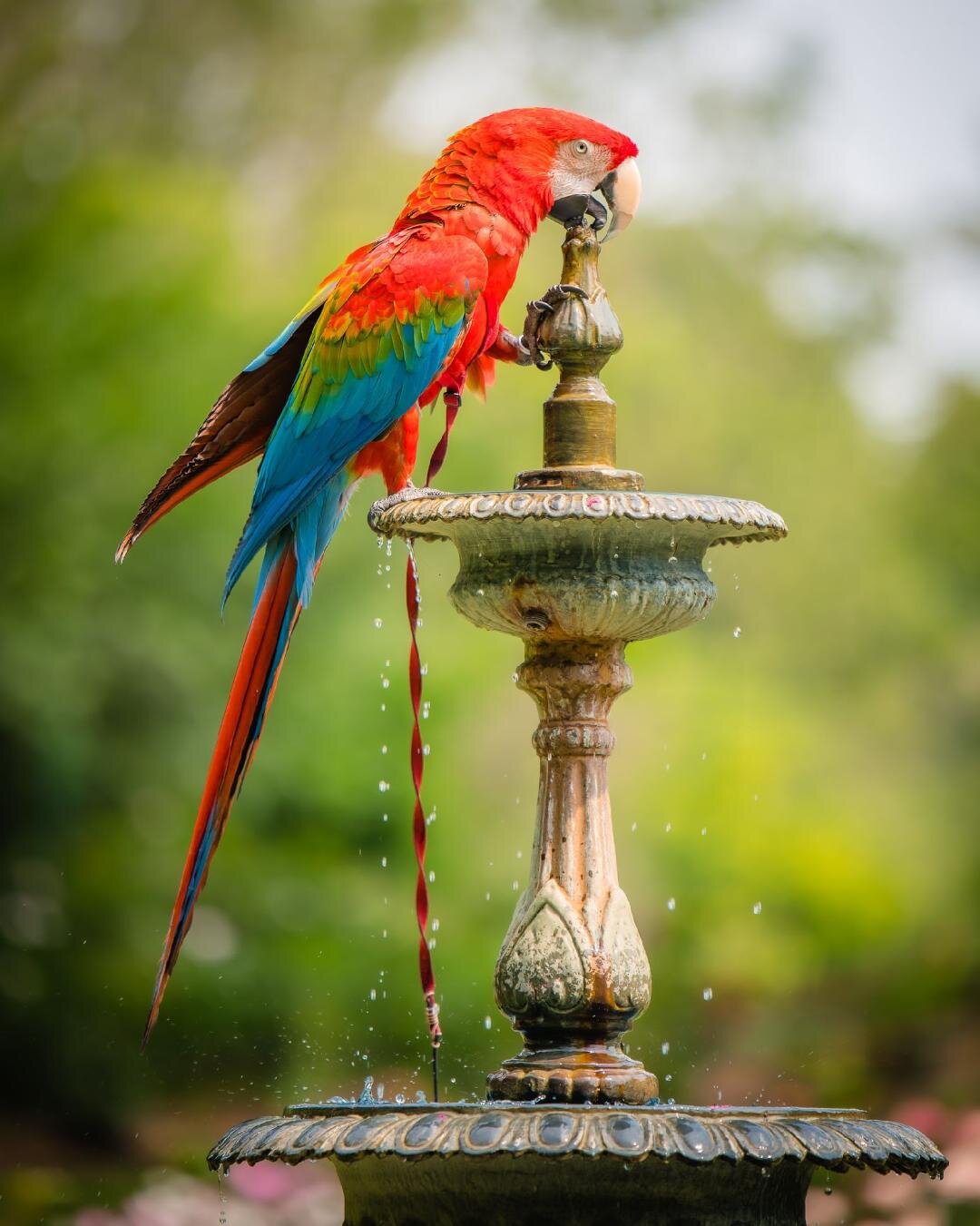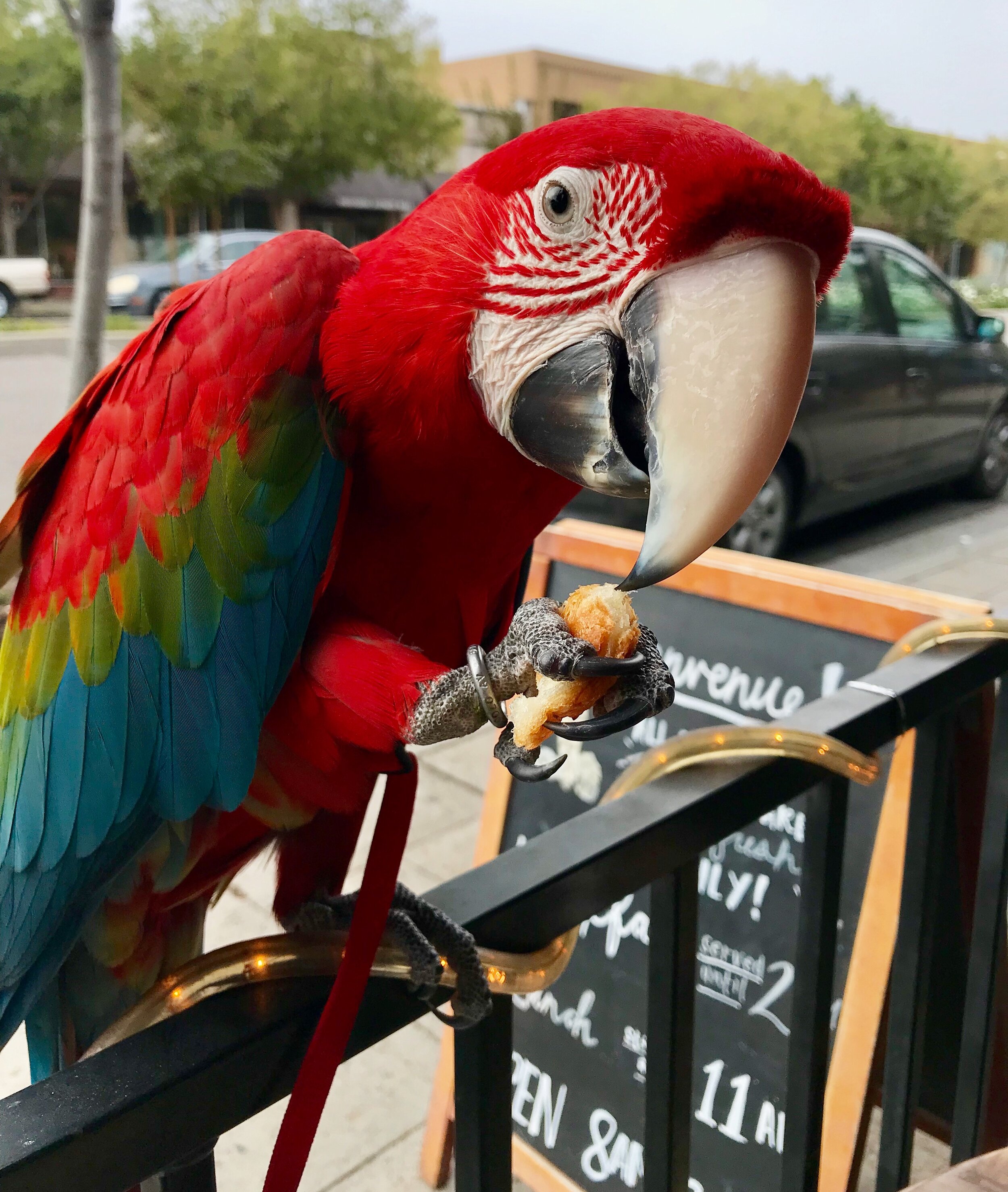The Parrot University
The Science of Handfeeding and Weaning the Baby Parrot: Section One
Handfeeding baby parrots from seven weeks old through weaning is quite easy. Unfortunately, there is a lot of misinformation written and repeated to the contrary. Rarely do positive handfeeding experiences get published, but any of the few problems become headline news for years. These horror stories are repeated so often and without reference that they have become "Urban Legends." New handfeeders are left with the belief that baby parrots are being abused in most every case. On the contrary, all that is needed is a little information, common sense, and time. At Hartman Aviary, we have produced thousands of babies with very few complications.
The Science of Handfeeding and Weaning the Baby Parrot: Section Two
With a little patience, anyone who can feed a baby human can feed a baby parrot.
Once a formula has been chosen read the manufacturer's instructions a few times. Reading a few times is necessary because mixing and feeding the formula is very easy to do correctly, but our apprehensions may create questions in our minds that are better solved before the first feeding.
The Science of Handfeeding and Weaning the Baby Parrot: Section Three
Weaning is a stage of development where a young parrot becomes able to interact independently within a flock or family, without requiring continual nurturing support that parents supply through feeding and tactile reassurance. This stage of development has four main components: nutrition, nurturing, tactile stimulation and disinterest. For most animals that feed their babies, food is an important tool during weaning. Long after the baby is able to sustain himself on his own, he will want mom and dad to periodically feed him as a means of proving they are still available to protect him. Knowing that support is close by and available even when not needed, develops trust and independence in the baby. In addition to nutrition, food is a symbol of support, which allows the young animal to freely explore, learn and develop in confidence. As the baby gains independence he needs less support, and at the same time the parents are tiring of feeding junior, and give into his demands less often and with less food.
The Science of Handfeeding and Weaning the Baby Parrot: Section Four
Move babies out of the constant temperature environment of a brooder as soon as practical. A baby kept at a constant temperature or is too warm will tend to be sedentary. Movement is necessary for muscle and bone development, as well as coordination. Some change in ambient temperature is good for babies. Changing temperatures causes the baby's metabolism to change periodically and promotes motor movement as the baby searches for a warmer area.
The Science of Handfeeding and Weaning the Baby Parrot: Section Five
Common worries occur much more often than the common problems you can find in all parrot books and on the internet. Few owners publicize their successes, only their problems. This situation can present a picture of hazards everywhere. The truth is that chance favors the prepared mind, so read on and the common worries will be much less common.
Start your journey
Lorem ipsum dolor sit amet, consectetur adipiscing elit, sed do eiusmod tempor incididunt ut labore et dolore magna aliqua.





